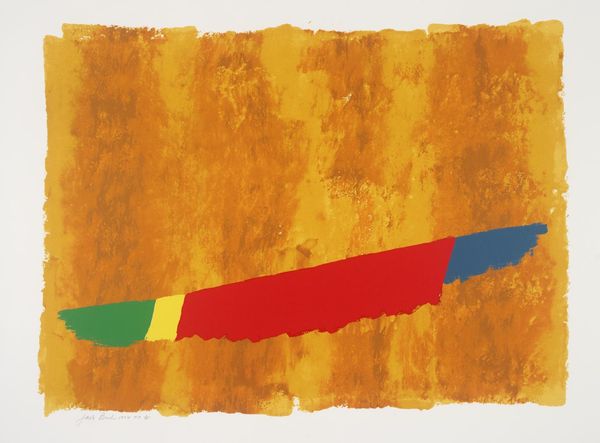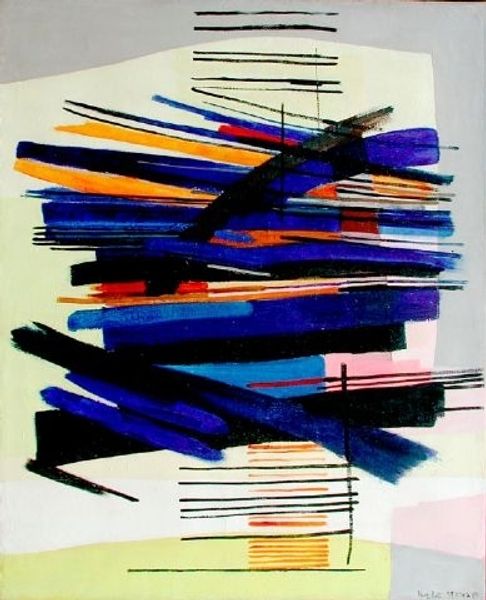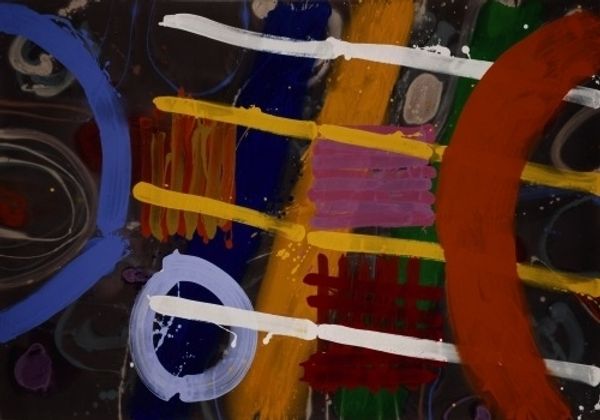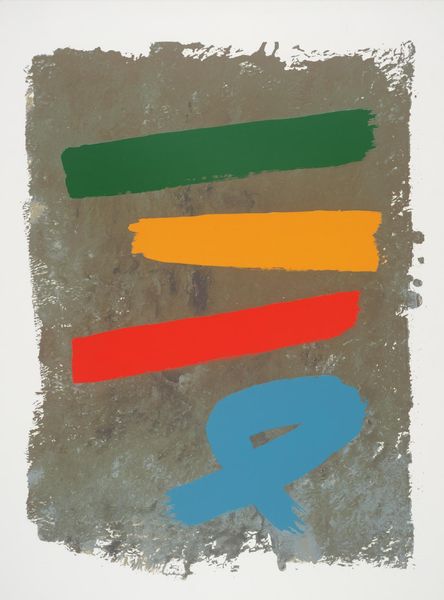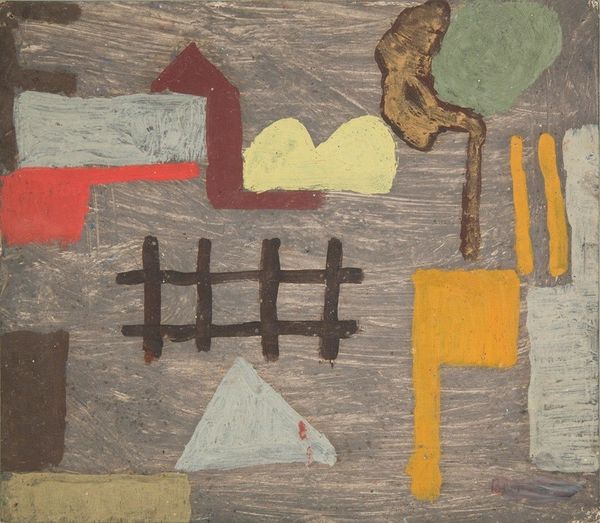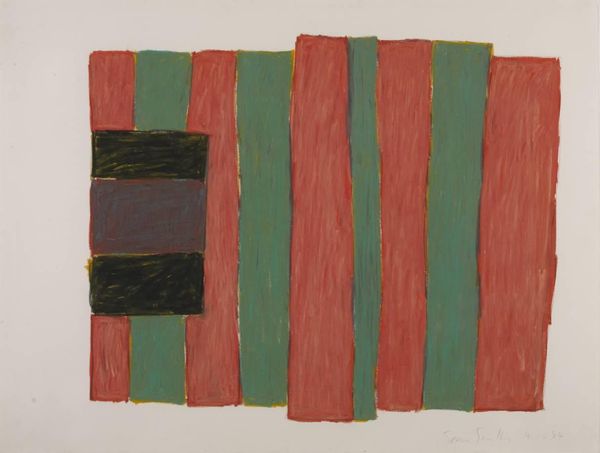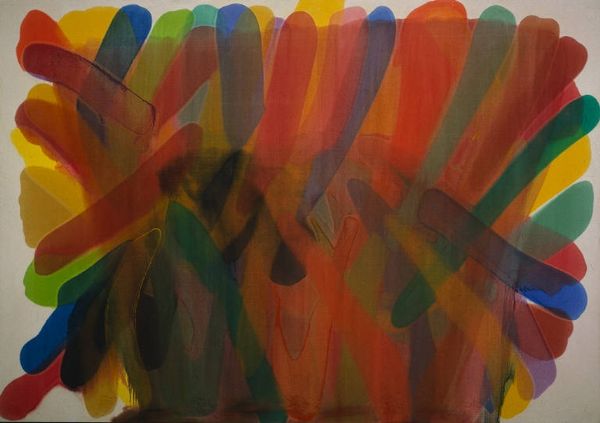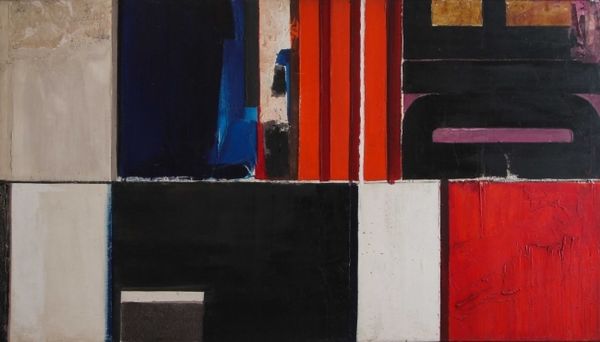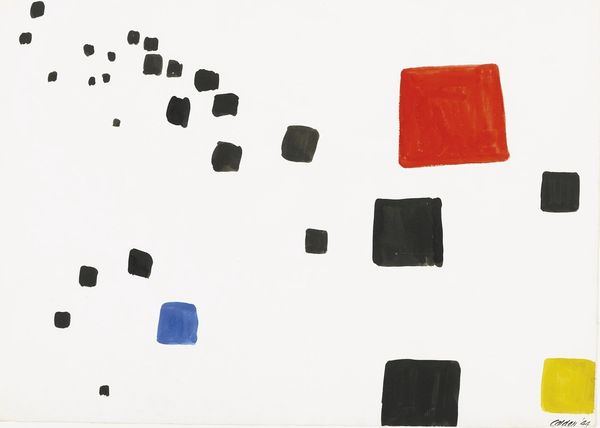
painting, acrylic-paint
#
abstract-expressionism
#
abstract expressionism
#
abstract painting
#
painting
#
pop art
#
acrylic-paint
#
form
#
acrylic on canvas
#
geometric
#
abstraction
#
line
Copyright: Mario Ballocco,Fair Use
Editor: Here we have Mario Ballocco's "Untitled," from 1950, created using acrylic paint. It's an arresting work, a series of geometric shapes against a stark black background, almost like a visual puzzle. How do you interpret this piece within its historical context? Curator: This work, produced in 1950, firmly places Ballocco within the Italian abstract art scene grappling with the legacy of Futurism and the rise of American Abstract Expressionism. We see the influence of both in his simplification of form and emphasis on pure color, but there's also a distinctive coolness, wouldn’t you agree? The work consciously refrains from the emotional outpourings so embraced by the American scene. Editor: Coolness, definitely. It feels very deliberate, very controlled. Do you think that's a response to the socio-political climate of postwar Italy? Curator: Absolutely. Post-war Italy was rebuilding, redefining itself. There was a tension between embracing modernity and remembering the past. Ballocco’s abstraction, stripped of overt emotionality, could be seen as a visual manifestation of this cultural negotiation, as Italians distanced themselves from past propaganda imagery. Editor: So the painting, in its abstractness, is kind of a commentary on representation itself, or maybe even a refusal of it? Curator: Precisely. It raises questions about the public role of art. What kind of imagery is appropriate for a society recovering from war? Is pure form a way to create a universally understood visual language, divorced from ideology? What did you learn from this approach? Editor: That abstraction can be a powerful statement. Ballocco's piece shows the cultural awareness even in seemingly ‘apolitical’ art. Curator: Exactly. It highlights how every artistic choice resonates within a broader social and historical framework, even the decision to eschew the figure and choose form.
Comments
No comments
Be the first to comment and join the conversation on the ultimate creative platform.

